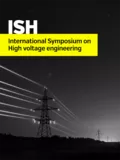Summary
This paper deals with optimized tests circuits for composite voltage tests. The clause 9.3 of the standard IEC 60060-1 Ed-3.0 2010 describes tests with superimposed voltages or composite voltages as a superimposition of two different test voltages generated by voltage sources that are connected via coupling and blocking elements to the HV terminal of the test object. In terms of tests on HVDC cables or HVDC gas insulated switchgear (GIS), the superimposed voltage tests belong to the type tests and prequalification tests and comprise the superimposition of HVDC voltages into lightning voltages and HVDCs voltage into switching voltages with the same polarity and/or opposite polarity. The waveforms and voltage levels to test HVDC cables up to 500 kV are described in CIGRÉ technical brochure 469. To protect the HVDC source against the impulse voltages coming from the impulse generator, a damping resistor with very high resistance is required. In addition, to protect the impulse generator against the voltages coming from the DC source, a spark gap or a suitable capacitor is needed. The choice of spark gap or capacitor in the test setup has a significant impact on the waveform, the voltage level from the source and the protective effect of the corresponding HV source. The measurement of the composite resulting voltage on the test object with a suitable divider is also a very important issue for such tests. This paper attempts to show results from comparisons between the use of a spark gap or blocking capacitor based on simulations and tests on real test objects. In addition, the measurement of the composite voltage with an appropriate voltage divider is also discussed.
Additional informations
| Publication type | ISH Collection |
|---|---|
| Reference | ISH2017_182 |
| Publication year | |
| Publisher | ISH |
| File size | 301 KB |
| Pages number | 5 |
| Price for non member | Free |
| Price for member | Free |
Authors
R. PIETSCH, M. KUBAT, T. STEINER
Keywords
Superimposed test, Spark gap, Damping resistor, Blocking capacitor



